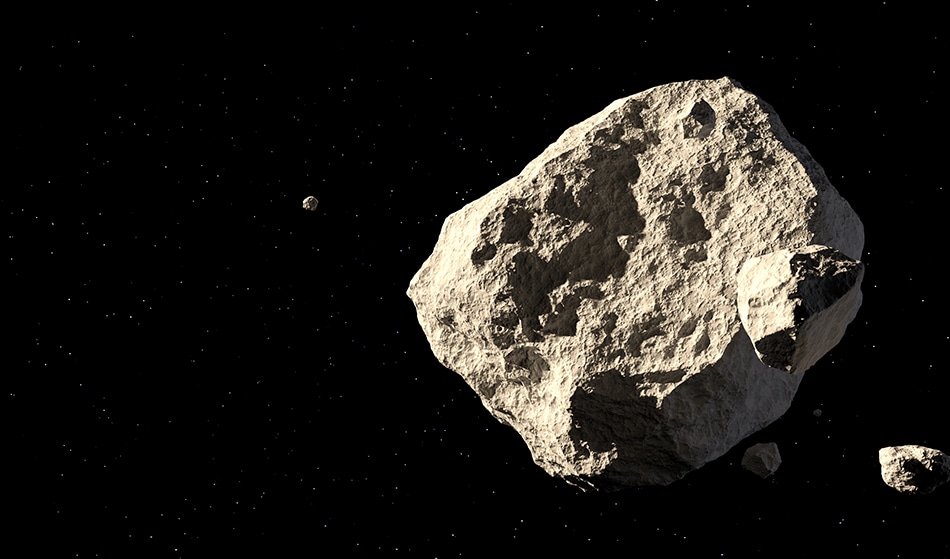Compelling evidence for life outside of our own planet has been discovered, suggesting we may not be alone in the universe or even in our own solar system.
New technology has been used to study meteorites that fell to Earth in 1998. Back then the technology was not advanced enough to detect traces of amino acids, which could be the building blocks of life.
An international team at the Open University in the UK and Nasa Johnson Space Centre in Texas found the amino acids, which form the basis of proteins and hydrocarbons. These organic compounds, made up of hydrogen, carbon and liquid water, are those required to support life. It’s these that were found within the salt crystals of the meteorite.
The halite (salt containing) crystals were found in the meteorites Zag and Monahans, which are believed to be around 4.5 billion years old. They are thought to come from our own solar system somewhere between Mars and Jupiter.
The study, which was published in Science Advances, appears to support data from Nasa’s Dawn spacecraft which also suggests there may be life on other nearby asteroids.
The reason the rocks have been on earth this long without the discovery being made is due to the lack of technology. This study used a combination of highly sensitive mass spectrometers and NanoSIMs equipment. All of the equipment was used in one of the most clean labs on the planet - the Johnson Space Centre. This meant that readings could be clinical and accurate without the worry of contamination.
 Image credit: Alexyz3d/shutterstock
Image credit: Alexyz3d/shutterstock
Thankfully the samples have survived, intact, long enough for the study to be carried out and at a time when Dawn spacecraft data could be used to corroborate results. The study points out, “Halite easily dissolves under humid conditions; hence, only the Monahans and Zag meteorite fragments that were carefully kept in desiccated environments, such as under dry nitrogen in a laboratory, have preserved abundant blue/purple halite crystals”.
The mass spectrometer detects varying molecules based on their size, while the NanoSIM uses beams of ions to study the chemical composition of organic materials. The Raman spectroscopy technique employed uses light to detect chemical composition of organic materials and can confirm the presence of water. The combination of the two methods allowed the scientists to determine the makeup of the salt crystals thereby revealing the potential proteins within.
The salt crystals were collected from the meteorites before being dissolved into water. This then allowed for the extraction of acids and any separate organic compounds ready for analysis. The study states, “A Zag halite crystal was pressed flat onto annealed high-purity gold foils and analysed with the μ-L2MS instrument located at NASA’s Johnson Space Center, which was optimised to detect aromatic/conjugated organic molecules at the micrometer scale and the subattomole level. The μ-L2MS uses separate laser sources to non-thermally desorb molecules from the sample surface as neutral species and to soft-ionise selective compounds. Energy in excess of that needed for ionisation is transferred to the kinetic energy of the liberated photoelectron, thereby allowing detection of intact positive molecular ions with virtually no fragmentation.”
Each salt crystal, which is about two millimetres in size and the colour of a blue sapphire, is essentially a little package full of organic compounds and the necessary building blocks of life.
What's even more incredible is that the salt crystals from both meteorites are believed to be from the largest asteroid in the asteroid belt, Ceres, which suggests that it could be a suitable place for the formation of life.
Dr Queenie Chan, Lead author
While the crystals themselves feature the potential protein of life, it might not actually be from our solar system. The researchers also analysed the chemical composition of the meteorites themselves and found that the organic matter was different to that found in the crystals. This suggests that they may be from two different locations.
Dr Chan, talking about the origins of the samples said: "We believe that the salt may have originated in Ceres or some other carbon-rich asteroid body, while the meteorites come from a different parent body - one that has been heated to 950 degrees Celsius so any trace of liquid water present in it would have gone. This proves to us the salt crystals and the meteorites come from two different asteroids. We believe the meteorite may have come from a stony asteroid, maybe an S-Type asteroid, which are not carbon-rich and are found in the same asteroid belt."
Disclaimer: The views expressed here are those of the author expressed in their private capacity and do not necessarily represent the views of AZoM.com Limited T/A AZoNetwork the owner and operator of this website. This disclaimer forms part of the Terms and conditions of use of this website.